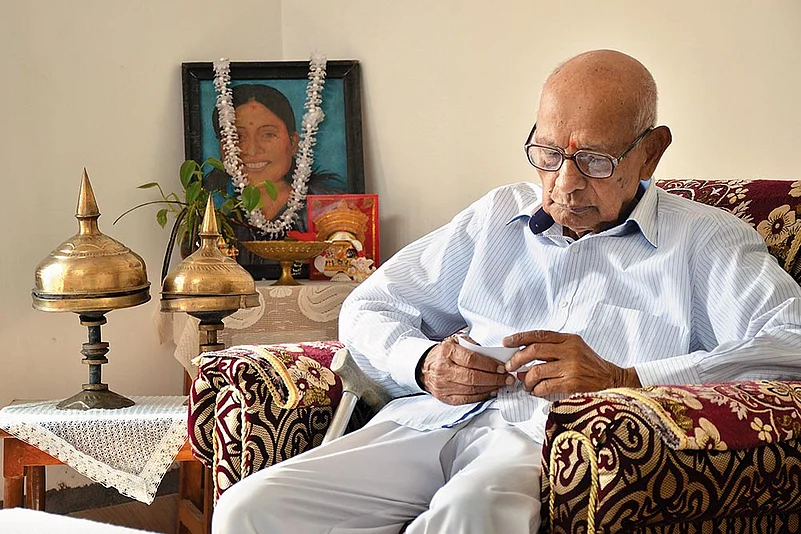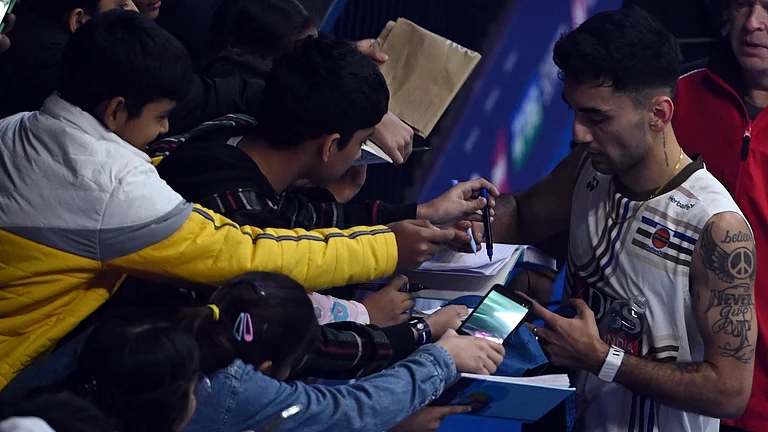The rice paddies were almost ready for harvest, turned golden by the December sun, on the bountiful land in Assam’s Barpeta district, close to the Bhutan border. Old-timers at Uzan Barbari, one of several small hamlets that dot the landscape, still recall that fateful evening. As dusk settled on the land, a bitter cold wind was blowing in from the Himalayan foothills, sending people scurrying indoors, to the warmth of their hearths. All, except a group of youth who set out to the nearest township Bhawanipur where thousands of people had gathered to join a protest demonstration on the national highway.
Those were tumultuous times in Assam. Just months ago, the All Assam Students’ Union (AASU) had launched the anti-foreigners agitation which was to convulse the state for the next six years, and set the tone for staggering events in the next few decades. The exercise to update the National Register of Citizens (NRC)—a controversial subject today—would also grow out of the same agitation many years later. The fire had just been lit in the form of a mass movement that would even trigger charges of Assamese jingoism from critics.
And it was into this raging fire jumped Khargeswar Talukdar, just 18 then, as he joined the protesters for what was seen as a battle to save their land and culture from “lakhs” of undocumented migrants swamping Assam from former East Pakistan and later Bangladesh. As police swooped down, the protesters were forced to flee. Talukdar, the second of four brothers, was detained by police and allegedly tortured in custody, leading to his death. Former supercop K.P.S. Gill, who was a DIG in Assam then, is accused of assaulting Talukdar in custody. But he later denied the charge, claiming that Talukdar fell into a roadside pond while fleeing and drowned.

‘Will give blood, not oil’, scribbled with blood by Dulal Sharma in Guwahati.
Khargeswar Talukdar is officially acknowledged the first “martyr” of the Assam Agitation, one among 855 people recorded by the state government as martyrs of the six-year-long mass movement. “I was just three when dada died…But growing up, I have heard stories of his bravery as well as the sacrifice by all those who died for the cause of Assam and the Assamese,” says Chandrakanta, the youngest brother of Khargeswar, at the family home. He is now the general secretary of an organisation representing the families of those who dies in the struggle, the All Assam Martyrs’ Families Coordination Council. “Forty years have passed since dada died, and nearly 35 years since the Assam Accord was signed. But we wonder, if their sacrifice has been worth it. The number of foreigners in the final NRC is a big shock…can their numbers be so less?” Chandrakanta asks.
The final NRC published on August 31 has identified just over 1.9 million as foreigners in Assam but the number has been contested by the AASU and other organisations in Assam, besides the ruling BJP, which had turned the NRC update exercise into a successful poll issue. The number of “undocumented migrants” in Assam has always been in the realm of speculation and conjecture, ranging from a few lakhs to more than one crore. The BJP believes that the names of genuine Indian citizens—mainly Hindus—have been excluded from the NRC. Critics allege a witch-hunt against Bengali-speaking people from Bangladesh.
For Amar Nath Upadhyay, the NRC is incomprehensible business. At the ripe age of 89, Upadhyay is hard of hearing but his memory remains as sharp as ever. And he recalls the balmy day in 1980, August 16, when his daughter Bajyanti Devi, just 19, collapsed during an anti-foreigner demonstration. The event organised by the AASU in Tezpur was dramatically named ‘Ranasinga’—the war bugle—marked by blowing of the conch. “She was an expert in blowing the conch…she had such lung power,” Upadhyay says at his residence in Tezpur town. But after standing under a merciless sun for hours, Bajyanti collapsed and was later pronounced dead in the hospital. Doctors attributed her death to heat stroke; yet another name was added to the growing list of martyrs.
For the family, the biggest surprise came when the name of Upadhyay’s daughter-in-law Nirmala Devi and her two sons were left out of the NRC. Ironically, Nirmala Devi’s husband Rajendra Nath Upadhyay, whose name is in the list, has been engaged in the NRC update exercise. “I really don’t understand this. We submitted all the documents. But my wife was tagged a doubtful voter. We are sick and tired of this,” Rajendra Nath says. Upadhyay senior is trying to come to terms with the “NRC business” but is hopeful that justice will be done at last. “After all, my daughter gave her life for this land…we are Gorkhas but we have never felt anything else but Assamese,” adds Amar Nath Upadhyay, who had once unsuccessfully contested an assembly election on an Asom Gana Parishad ticket.

The AASU, which led the agitation, has categorically denounced the NRC numbers and says that the final list is an insult to the sacrifice of the martyrs. “Did all those 855 bright, young people give their life in vain,” says AASU adviser Samujjal Bhattacharyya. In January this year, families of the martyrs had returned the memento and citations to the Assam government to protest the government’s decision to introduce the Citizenship Amendment Bill, which aims to distinguish migrants eligible for Indian citizenship on the basis of religion. Though the bill fell through, Union home minister Amit Shah said this week that the Centre will reintroduce the bill.
Though the AASU or other organisations were yet to react to Shah’s comments on the bill, Renubala Das wonders what would have been the response of her late husband Mahendra Das, one of the martyrs of the agitation. He was killed in a bomb blast that tore through a protest event in Fatasil Ambari in Guwahati in June 1982. Nearly 20 people were killed in the explosion. The perpetrators of the blast was believed to be the United Liberation Front of Asom (ULFA), a militant organisation that sparng from the agitation; some youth in Assam saw the non-violent agitation as a waste of time and had turned towards an armed struggle. “What can I say…after a lifetime of struggle to support my son’s education, I am not sure if we got what my husband died for,” Renubala adds.
The agitation turned bloody on many counts. Even before Das and 19 others died, firebrand student activist Dulal Sarma used a shaving blade to cut a deep gash on his chest and with the blood that flowed scribbled on a street in Guwahati, “Tez dim, tel nidiu” (We will give blood, not oil). It was one of the most dramatic moments of the agitation, etched in the collective memory of the state during an oil blockade on April 23, 1980. The tarmac on which Sharma spilled his blood is now part of a memorial erected at the very spot in Guwahati.
If stones could speak, there are many stories still to be told—of another time, another day.
By Anupam Bordoloi in Guwahati with inputs from Abdul Gani


























